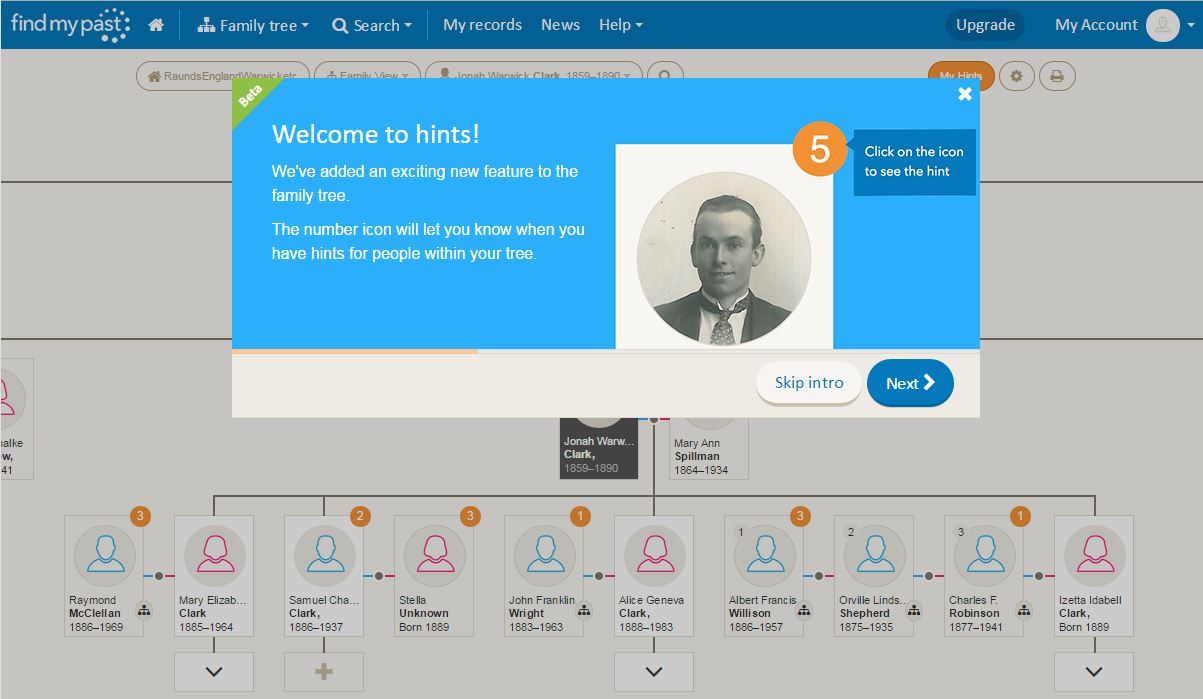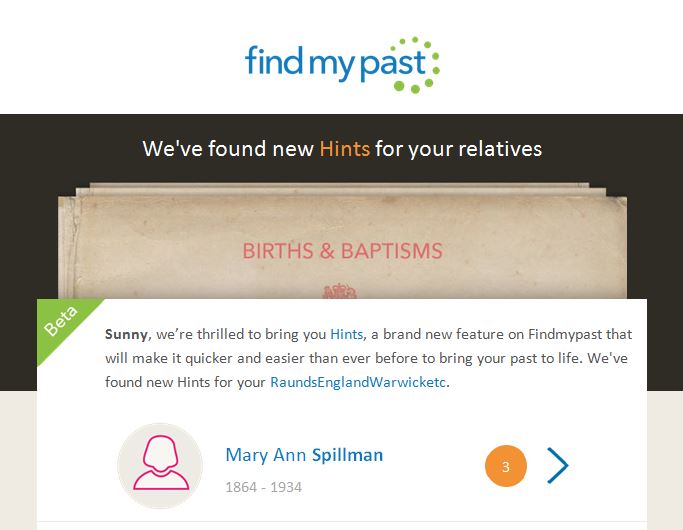by Lisa Cooke | Jul 10, 2015 | 01 What's New, Ancestry, British, Census, Church, Digital Archives, FamilySearch, Findmypast, images, Irish, Jewish, Records & databases, United States

Every Friday, we blog about new genealogy records online. Do any of the collections below relate to your family history? Please share this post with any genealogy buddies or societies that might be interested. At the end of this post is a search tip for researching records in other languages.
ARGENTINA BAPTISMS. Ancestry has updated its database of Argentina, Select Baptisms, 1645-1930 (in Spanish), which is also searchable on FamilySearch. It’s a partial but growing index; click here to see current coverage on FamilySearch. Baptismal records are generally for newborn babies, with the date and place of event, parents’ names, and newborn death information.
ENGLAND AND WALES CRIMINAL RECORDS. Nearly 2 million records have been added to Findmypast’s databases of “crime and punishment.” Datasets include England & Wales, Crime, Prisons & Punishment, 1770-1935, with details of felons in England and Wales, 1770-1935; the Home Office: Newgate Prison Calendar 1782-1853, taken from printed lists of prisoners to be tried at Newgate, in London, a prison for debtors and felons; Quarterly Returns of Prisoners 1824-1876 with 639,600 records of sworn lists of convicts held on board prison hulks, in prisons and criminal lunatic asylums; The Home Office: Criminal Entry Books 1782-1871, letters sent out from the Home Office, and a sort of “most wanted” list: the Metropolitan Police: Criminal Record Office: habitual criminals’ registers and miscellaneous papers kept by the police and circulated among the force on a regular basis.
IRELAND PARISH RECORDS. We blogged earlier this week about this new collection and it’s been a super popular post! The National Library of Ireland has posted digitized images of all its parish records, dating from the 1740s to the 1880s. Click on the blog post link to learn more about it.
KANSAS CENSUS RECORDS. Kansas, City and County Census Records, 1919-1961 is now available to Ancestry subscribers. Partially indexed, the images are of population schedules for city- and county-level enumerations. These include household, livestock and agricultural details by head of household; beginning in 1953, all household members are named.
POLAND GHETTO ID CARD REGISTRATIONS. A new FREE database on Ancestry is Poland, Łódż Ghetto ID Card Registrations, 1939-1944 (USHMM) (in German), an index to Jewish records from the United States Holocaust Memorial Museum. Records include extracts from vital records, ID cards, work registration documents and protocol forms.
 Some of the record sets mentioned above–and many others–were written in languages you might not speak. For best results, use the version of the name that would be common in that language, along with keywords in that language, before trying searches in your own language. Google Translate does translate common keywords and some common English names (John, Alexander, Mary, Andrew) to other languages, but isn’t guaranteed to show you an equivalent every time (especially if one doesn’t exist). You can also Google “name translator” plus the name of the language you wish to know; several online tools exist. And MyHeritage has advanced translation tools that do the work for you when you’re searching!
Some of the record sets mentioned above–and many others–were written in languages you might not speak. For best results, use the version of the name that would be common in that language, along with keywords in that language, before trying searches in your own language. Google Translate does translate common keywords and some common English names (John, Alexander, Mary, Andrew) to other languages, but isn’t guaranteed to show you an equivalent every time (especially if one doesn’t exist). You can also Google “name translator” plus the name of the language you wish to know; several online tools exist. And MyHeritage has advanced translation tools that do the work for you when you’re searching!
Resource:
by Lisa Cooke | Jul 31, 2015 | 01 What's New, Digital Archives, History, images, Research Skills, United States, YouTube
 A determined graduate student found some chilling historical video footage of a ship that capsized in Chicago. It was in an online archive–but he still had to dig deep for it!
A determined graduate student found some chilling historical video footage of a ship that capsized in Chicago. It was in an online archive–but he still had to dig deep for it!
Recently Gems fan Kathy sent us a story about an amazing video footage find. The subject line of her email caught my eye: “Gems can’t always be found by ‘panning:’ sometimes we have to ‘dig!'” She went on to say:
“You’re always stressing the importance of looking in the less obvious places but this is one of the best examples. Attached is an article about a horrific tragedy that happened in Chicago 100 years ago….It explains how video footage [about this disaster] was found in a British online newsreel–but it was not referenced under “Eastland,” the name of the ship, or “Chicago,” the location. We all like the easy way of finding things but finding gems sometimes takes digging and you just can’t pan for it.” (Click here to see the footage, though it may not be something everyone wants to watch.)
Thank you, Kathy! I often encourage people to dig for historical video footage (see Resources, below). Old footage shows us the past so compellingly! Also, did you notice that the video for a Chicago disaster was found in a British archive?? Not even the same country! Not too long ago, we blogged about how the media often picks up out-of-town stories. We may discover coverage about our relatives in newspapers and newsreels far from their homes. Just a tip to help YOU find more gems.
Resources:
My Most Amazing Find Ever: Family History on YouTube (No Kidding!)
Find Your Family History in the 1950s (tips for finding video footage)
6 Tips for Using YouTube for Family History
by Lisa Cooke | Aug 12, 2015 | 01 What's New, Book Club, Genealogy TV, images, Memory Lane, Military, United States
 An incredible tale of deception during World War II. Inspiring research and storytelling techniques. Learn about the Ghost Army–and the creation of its PBS documentary–in the new, free Genealogy Gems Podcast episode 182.
An incredible tale of deception during World War II. Inspiring research and storytelling techniques. Learn about the Ghost Army–and the creation of its PBS documentary–in the new, free Genealogy Gems Podcast episode 182.
In the summer of 1944, a handpicked group of young GIs landed in France to conduct a secret mission. They were to create an elaborate façade of military might for an audience, the German army. These men had one goal: to fool the enemy into believing they were an American army thousands strong, and draw their attention away from the actual fighting troops.
 In this podcast episode, we celebrate the Twenty-third Headquarters Special Troops–known as the Ghost Army–with my special guest Rick Beyer, author of the book The Ghost Army of World War II: How One Top-Secret Unit Deceived the Enemy with Inflatable Tanks, Sound Effects, and Other Audacious Fakery and director and screenplay author of the acclaimed documentary film Ghost Army, which premiered on PBS.
In this podcast episode, we celebrate the Twenty-third Headquarters Special Troops–known as the Ghost Army–with my special guest Rick Beyer, author of the book The Ghost Army of World War II: How One Top-Secret Unit Deceived the Enemy with Inflatable Tanks, Sound Effects, and Other Audacious Fakery and director and screenplay author of the acclaimed documentary film Ghost Army, which premiered on PBS.
Rick joins us for a riveting conversation. He explains the three divisions of the Ghost Army, and how they fulfilled their duties with courage and creativity. Then he takes us behind the scenes of the book to explore research strategies and in particular, effective interviewing techniques. Finally he talks to us about putting it all together: storytelling, the integration of all the art, photos and documents, and fantastic catchy chapter titles that make you want to read.
This is a must-hear episode whether you love history, mystery, military stories, family history writing advice or just listening in on a great conversation! Thank you for sharing this episode with others who will enjoy it!
 If you love author interviews, check out the Genealogy Gems Book Club. We regularly interview writers of best-selling fiction and nonfiction titles that catch the interest of family history lovers.
If you love author interviews, check out the Genealogy Gems Book Club. We regularly interview writers of best-selling fiction and nonfiction titles that catch the interest of family history lovers.
by Lisa Cooke | Mar 5, 2015 | 01 What's New, British, Findmypast, Technology
FindMyPast, the genealogy website best known for its mega-collections of U.K. historical records, recently added a hinting feature to the family trees  component of its website.
component of its website.
According to a press release, “Once you start to add to your family tree, Hints will sift through 755 million of our birth, baptism, marriage, divorce, death and burial records to identify matches between them and the people on your tree, providing you with historical records and potential new relatives from our collections.” Hints do not search other trees, as FindMyPast does not have publicly-searchable trees.
 Now when you look at your tree, you’ll see little numbers appear next to individual profiles when hints are available. You can review buy nebuliser medication online hints at your leisure and extract facts from them to add to ancestral profiles.
Now when you look at your tree, you’ll see little numbers appear next to individual profiles when hints are available. You can review buy nebuliser medication online hints at your leisure and extract facts from them to add to ancestral profiles.
FindMyPast Hints are available to all users but are still in the beta testing stage. “You can expect a lot more from Hints in 2015, including Hints on census records and other collections. By reviewing all of your Hints, you’ll be helping us to ensure that our process continues to improve.”
 Click here to learn about our favorite collection at FindMyPast: PERSI, the Periodical Source Index. It’s not just an index any more: FindMyPast has started adding digitized articles to the thousands of article titles indexed in this amazing database of genealogical and historical articles in journals and periodicals.
Click here to learn about our favorite collection at FindMyPast: PERSI, the Periodical Source Index. It’s not just an index any more: FindMyPast has started adding digitized articles to the thousands of article titles indexed in this amazing database of genealogical and historical articles in journals and periodicals.
by Lisa Cooke | Aug 25, 2015 | 01 What's New, Cloud Backup, Disaster Prevention, images, Inspiration, Listeners & Readers, Preservation, Publishing, Writing Family History
 It’s time (maybe past time!) to write your family history. Should you write a book or throw everything into a digital archive?
It’s time (maybe past time!) to write your family history. Should you write a book or throw everything into a digital archive?
Recently Joyce attended a genealogy conference I taught that was sponsored by the Central Arkansas Library System. She wrote to us that she went home with a newly-resolved plan for how to write her family history:
“I thoroughly enjoyed hearing you speak. I learned a lot also. There was a question asked at the conference that I had also thought a lot about: how to leave your legacy to your family. With technology changing every day, I have decided that the old-fashioned way is probably the best. Technology will not change the fact that we can sit down to a paper book. So I will keep my CDs, DVDs, and flash drives; however, I will print out books for my family to have, whether they have access to the computer or not.”
A Combination Approach
I certainly agree that paper and books are certainly a solution for genealogical information being accessible for generations to come. I like a combination approach. Since paper can deteriorate and become damaged like anything else, having a cloud back up service (I use Backblaze) and digital items like flash drives is also a good plan.
Part of leaving a legacy also involves finding ways to share that help the next generations (particularly those not interested in research) understand the value of the family tree. That’s where a Google Earth “family history tour” or other innovative sharing comes into play. If you can click click, copy, and paste, you can create an exciting multi-media story that looks like a video game that will captivate the next generation! (Learn how to create a Google Earth family history tour in my 2-volume Google Earth for Genealogy CD). The combination of sharing the info in fascinating ways and preserving the info in reliable multiple formats is a comprehensive strategy for the future!
Resources
How Cloud Backup Helped One Genealogy Gem Get Closer to Living a Paper-Free Life
Recommended File Formats for Long-Term Digital Preservation
Why I Use and Recommend Backblaze Cloud-based Computer Backup Service
 Ready to make your own plan to write your family history and preserve it digitally? Share your resolve–along with this post–with someone else! Use the handy icons at the top of the page to share on Facebook, Pinterest or your favorite social media site, or email the link to this article to a friend. Thanks!
Ready to make your own plan to write your family history and preserve it digitally? Share your resolve–along with this post–with someone else! Use the handy icons at the top of the page to share on Facebook, Pinterest or your favorite social media site, or email the link to this article to a friend. Thanks!
 Some of the record sets mentioned above–and many others–were written in languages you might not speak. For best results, use the version of the name that would be common in that language, along with keywords in that language, before trying searches in your own language. Google Translate does translate common keywords and some common English names (John, Alexander, Mary, Andrew) to other languages, but isn’t guaranteed to show you an equivalent every time (especially if one doesn’t exist). You can also Google “name translator” plus the name of the language you wish to know; several online tools exist. And MyHeritage has advanced translation tools that do the work for you when you’re searching!
Some of the record sets mentioned above–and many others–were written in languages you might not speak. For best results, use the version of the name that would be common in that language, along with keywords in that language, before trying searches in your own language. Google Translate does translate common keywords and some common English names (John, Alexander, Mary, Andrew) to other languages, but isn’t guaranteed to show you an equivalent every time (especially if one doesn’t exist). You can also Google “name translator” plus the name of the language you wish to know; several online tools exist. And MyHeritage has advanced translation tools that do the work for you when you’re searching!





 component of its website.
component of its website. Now when you look at your tree, you’ll see little numbers appear next to individual profiles when hints are available. You can review
Now when you look at your tree, you’ll see little numbers appear next to individual profiles when hints are available. You can review  Click here
Click here




